※ 旧NMRIW-Lite Webは2023/12/1をもちまして上位機能を有するSPREME-webに移行いたしました。
概要
SPREME-webは、波浪中の船体運動、ハルガーダ荷重および圧力分布等を推定可能な周波数領域解析ツールです。SPREME(Strip/Panel-based Response Estimation Method)はその名称からわかるように、流体力の計算手法をストリップ法、3Dパネル法から選択することができ、どちらも同じインターフェース上で入出力データを操作することができます。
入力する船体情報は、画面上での入力、オフセットテーブルcsvファイルのインポートに加え、主要目から数学船型を自動生成することができます。波浪条件は、任意の規則波・不規則波を指定することができ、出力データは波浪中応答(6自由度運動や波浪荷重)の周波数応答関数および時系列データ、それらの短期・長期予測計算、さらには波浪と船体のアニメーションの出力も可能です。
計算手法
- ・ストリップ法
…NSM[1], STFM[2]から選択可、Diffraction流体力には溝口・渡辺の修正法[3]の適用を選択可 - ・3Dパネル法
…ゼロスピードGreen関数を用いた3次元Green関数法[4]
計算項目および出力形式
計算項目
- ・運動および運動加速度(6自由度)
- ・指定断面のハルガーダ荷重(軸力、垂直・水平せん断力、垂直曲げ・水平曲げ・捩りモーメント)
- ・指定位置の加速度(前後、上下、左右方向(船体固定座標系))
- ・指定位置の変動水圧(水圧成分別の出力も可能)
出力形式
- ・応答関数(振幅、位相)
- ・時系列
- ・長期予測計算結果(マクロ付きエクセルシート)
- ・アニメーション
- ・DLSA-Basicシステム[5]の入力となる荷重データ
インターフェース
SPREME-webは、ブラウザ上のインターフェースを通してデータの入力・解析の実行・結果の確認を行うことができます。入力・結果データのテキストファイルをアップロード・ダウンロードすることが可能なため、ブラウザ上の操作だけでなく、テキストファイルによる編集作業・データ処理も可能です。
船体情報入力
船体の主要目や船型情報、重量分布等の入力画面です。船型情報は、オフセットテーブルCSVファイルをインポートすることで生成するか、主要目(L, B, dおよびファインネス係数等)の入力から数学船型[6]を自動生成することもできます。作成したデータは、テキストデータとしてダウンロード・アップロードすることが可能です。
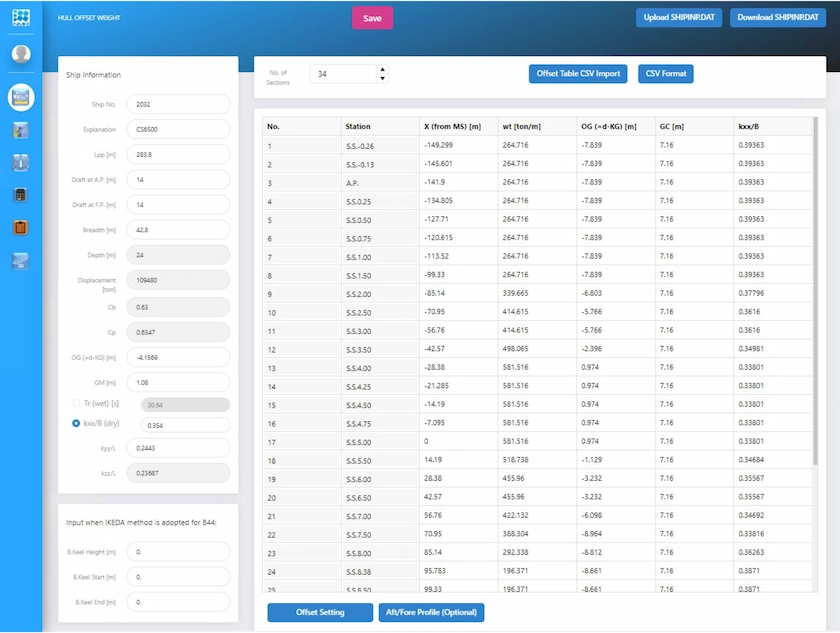
主要目および重量分布等の入力画面
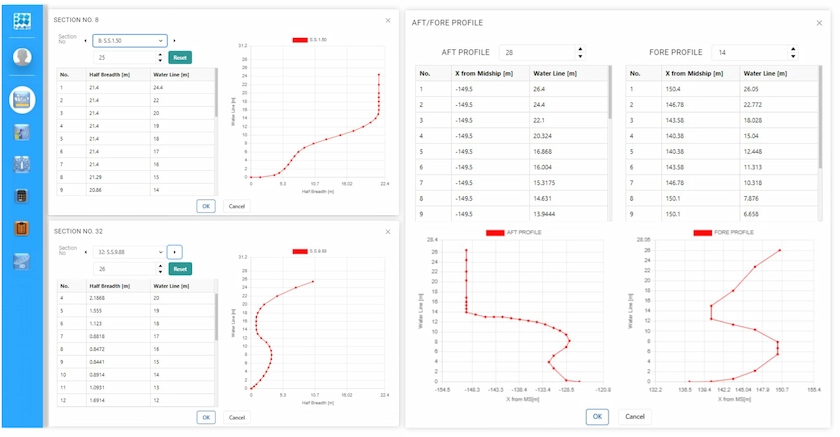
船体の断面形状および船首尾プロファイルの入力画面
入力船体データのチェック機能
入力した船体情報のチェック機能です。船型や静水中の釣り合い、静水中の垂直せん断力・曲げモーメントを確認することがでます。船型データから各種ファインネス係数、横揺れ固有周期に加え、重量分布の自動調整の計算もされます。
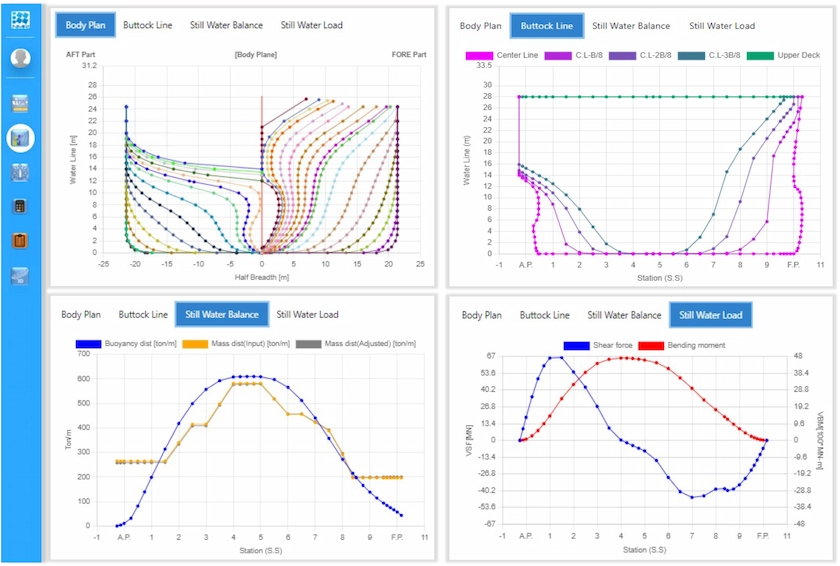
入力船体データから計算される各種情報 (Body Plan, Buttock Line, Still Water Balance, Still Water Load)
計算条件パラメータ入力
計算要素数、横揺れ減衰力係数の計算法、波条件(波高、波向き、波長、船速)および出力項目・形式の選択ができます。不規則波を指定する場合は、波スペクトルの指定以外に、個々の成分波の指定が可能です。
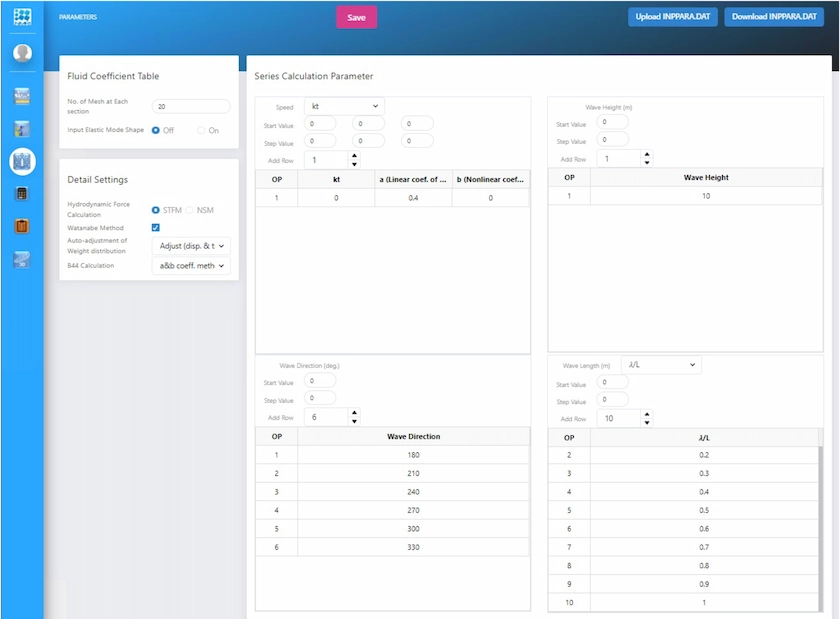
計算パラメータ入力画面
計算結果の例
出力された計算結果をブラウザ上で確認することができます。データ系列は自由に設定することができ、例えば全運動モードを同一グラフに表示することや、波向きの異なる水平曲げモーメントを同一グラフに表示するといったことが可能です。計算結果データファイル(CSV形式)のダウンロードも可能です。
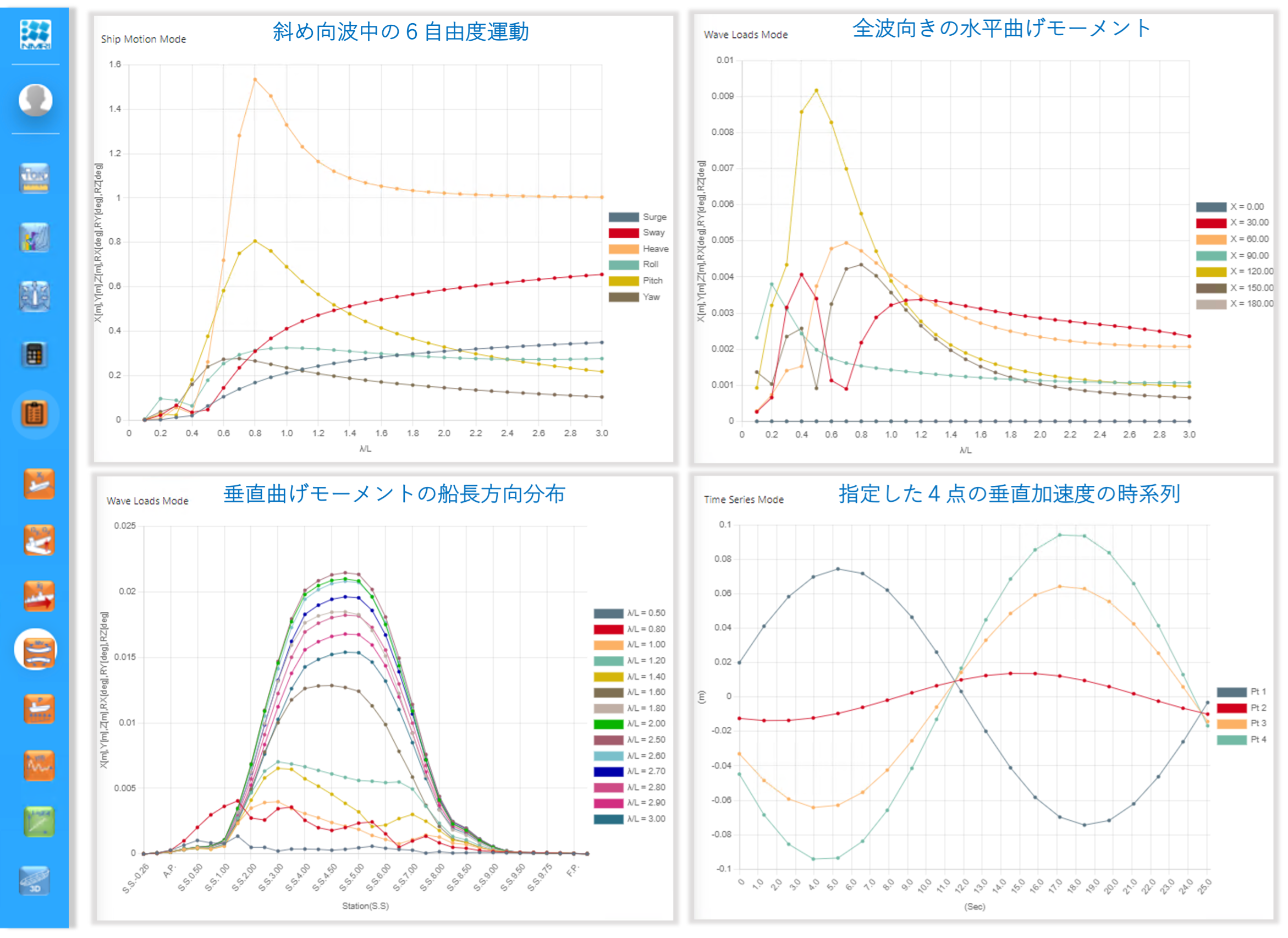
結果表示画面の例
長期予測計算の例
全波向き条件の規則波で計算した場合、長期予測計算を実行することが可能です。計算された応答関数データをもとに、エクセルシート内の計算によって短期・長期予測計算および最悪短期海象の特定が可能です。波浪情報は標準でIACS Rec.34にて規定される北大西洋の波浪テーブルおよび波スペクトルが用いられますが、変更することも可能です。
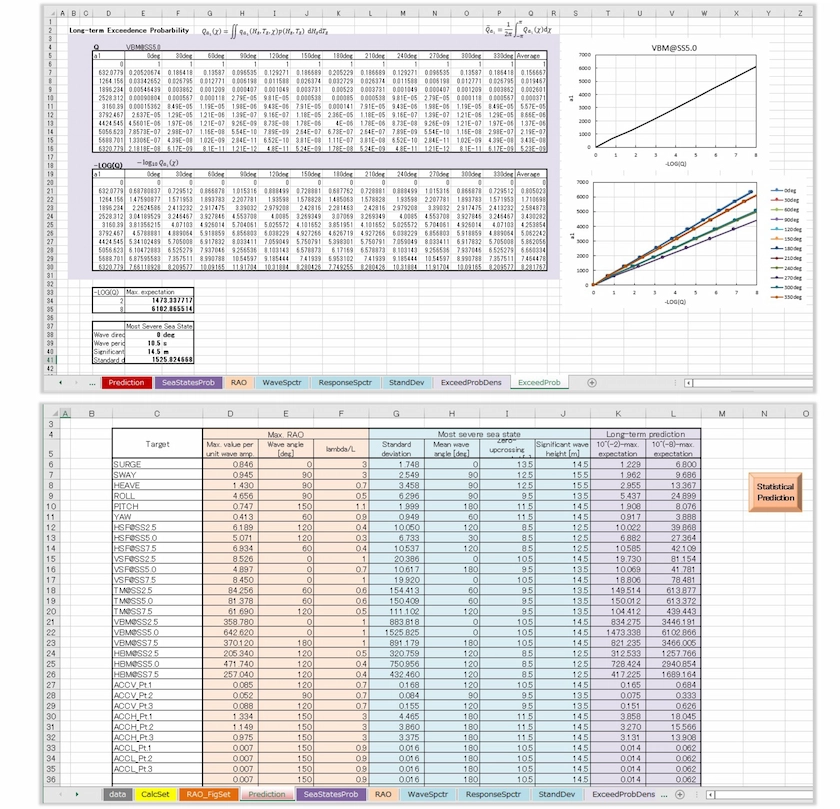
長期予測計算エクセルシートの例
(上:垂直曲げモーメントの長期超過確率分布、下:全応答の最悪短期海象条件および長期予測値)
波浪中応答アニメーションの例
波浪中船体応答のアニメーションを表示できます。入射波面および船体運動に加え、ハルガーダ断面力分布、圧力分布を可視化します。アニメーションデータファイルをダウンロードすることで、デスクトップ版のParaview(フリーソフト)によってアニメーションを表示し、動画ファイル化することも可能です。
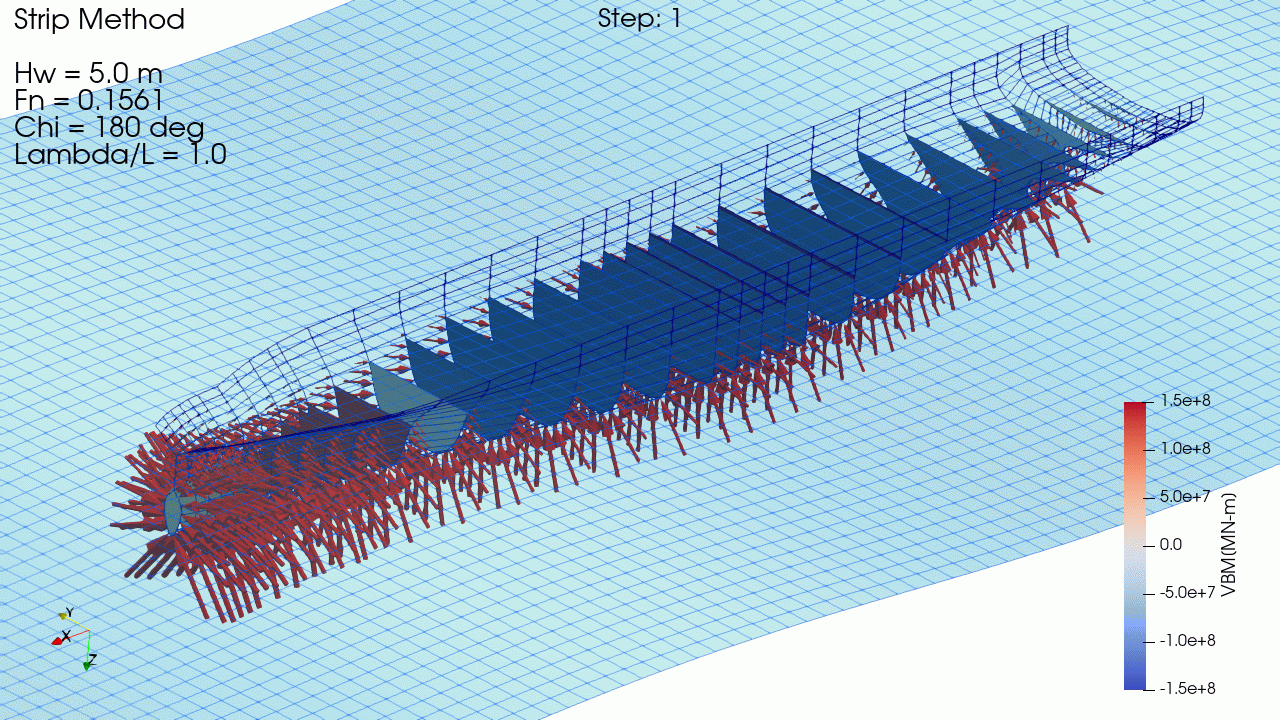
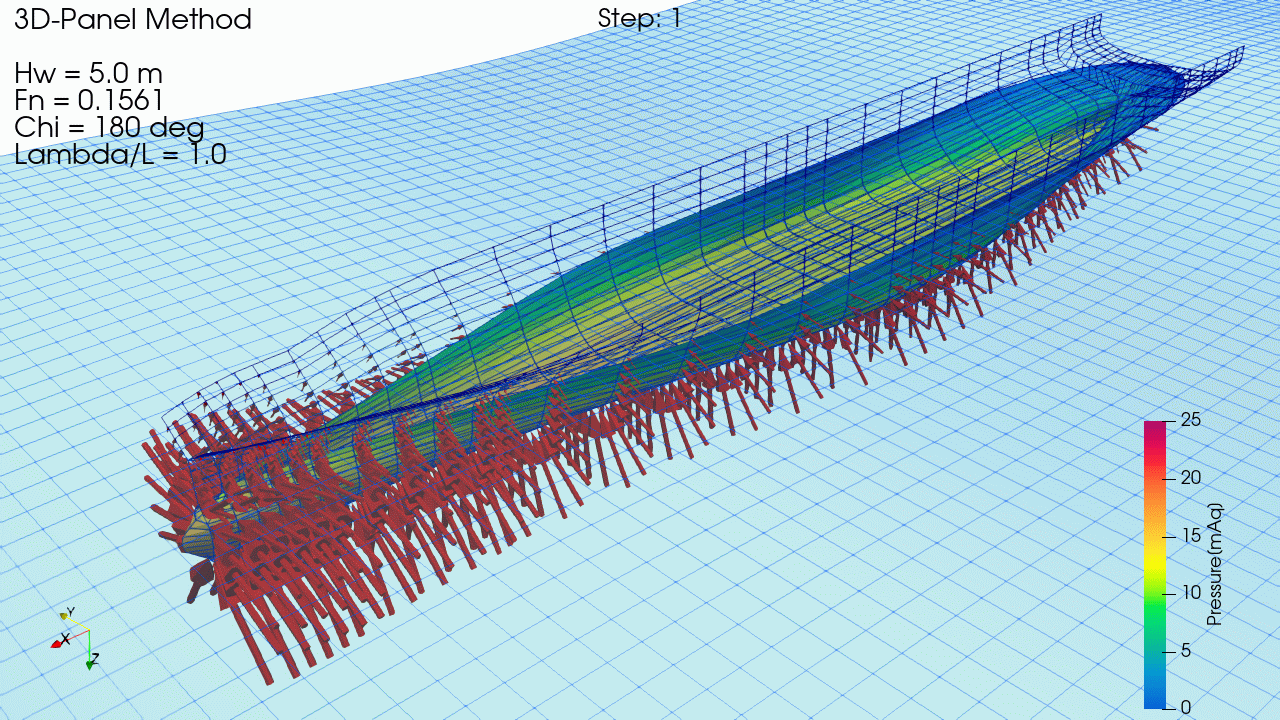
規則波中の船体応答アニメーション(上:ストリップ法、下:3Dパネル法)
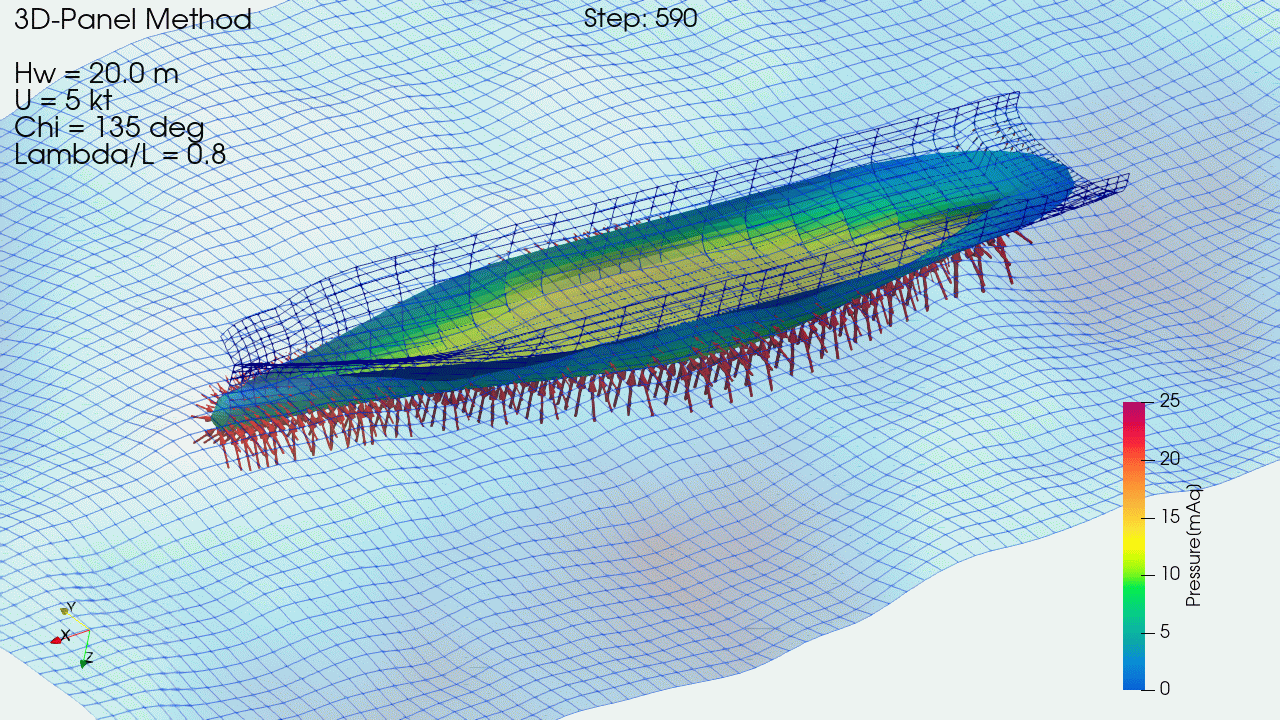
不規則波中の船体応答アニメーション(3Dパネル法)
付属資料「ハンズオンで学ぶ 波浪中船体応答」
本アプリは波浪中船体応答に対する前提知識の無い方に向けた補助資料「ハンズオンで学ぶ波浪中船体応答」を付属しております。本資料をもとに実際にアプリを操作することによって、波浪中船体応答の物理に対する理解を深めることができます。
アプリのご利用にあたって
本アプリは有料アプリケーションとなります。ご使用にあたっては無料の会員登録を行って頂いた後、有料会員申請を行って頂き海上技術安全研究所との間で書面による使用許諾契約を締結させて頂く必要がございます。会員登録は 会員登録ページで受け付けております。
ご利用料金
*本料金表は1アカウントのものになります。本アプリは同一アカウントで複数端末から同時にログインすることはできません
- ストリップ法のみ
- 契約期間 税込
- 6ヶ月 ¥110,000
- 12ヶ月 ¥150,000
- 3Dパネル法のみ
- 契約期間 税込
- 6ヶ月 ¥150,000
- 12ヶ月 ¥200,000
- ストリップ法 + 3Dパネル法
- 契約期間 税込
- 6ヶ月 ¥200,000
- 12ヶ月 ¥280,000
参考文献
- [1]田才福造, 高木又男: 規則波中の応答理論および計算法, 耐航性に関するシンポジウム,日本造船学会, pp.1-52, 1969.
- [2]Salvesen, N., Tuck, E., and Faltinsen, O.: SHIP MOTIONS AND SEA LOADS. 1970.
- [3]渡辺巌, 土岐直二, 伊東章雄: 第2章 ストリップ法, 運動性能研究委員会・第11回シンポジウム 耐航性理論の設計への応用, 1994.
- [4]Papanikolaou, A. and Schellin, T.: A three-dimensional panel method for motions and loads of ships with forward speed, Ship Technology Research,Vol.39, pp.145, 1992.
- [5]松井貞興, 村上睦尚, 林原仁志, 笛木隆太郎: 船体構造設計のための全船荷重構造解析ならびに強度評価システムDLSA-Basic, 海上技術安全研究所報告, Vol.19, pp.373-393, 2019.
- [6]Matsui, S.: A new mathematical hull-form with 10-shape parameters for evaluation of ship response in waves, 2022. https://doi.org/10.1007/s00773-021-00849-3



